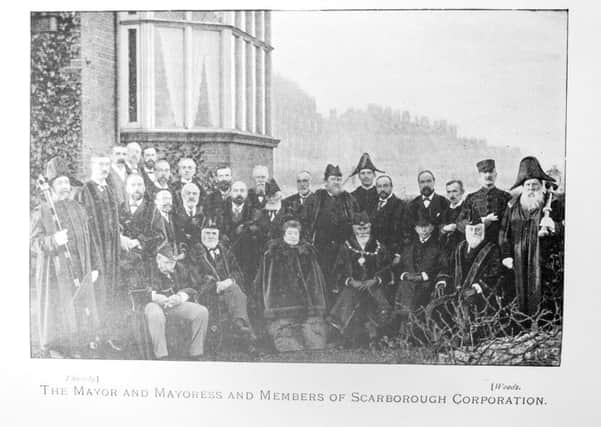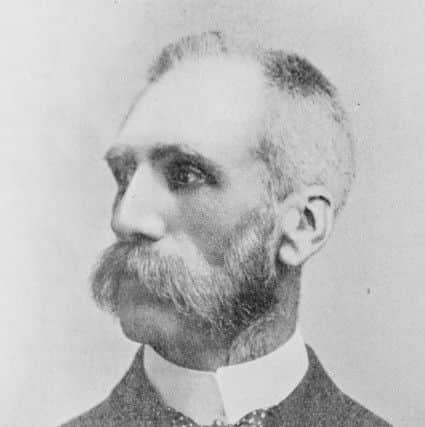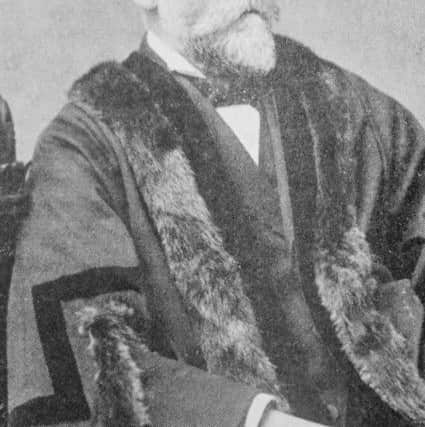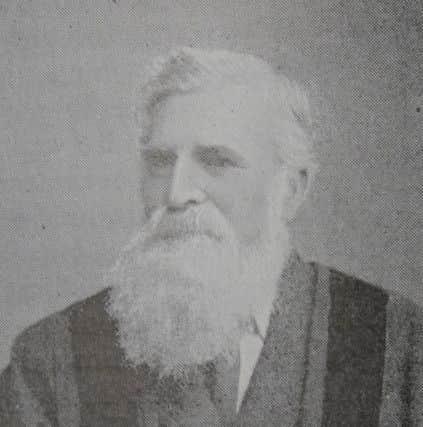Exhibit of the Week: Prominent figures who were all pogonotrophes


The British Beard Club Northern Beards Meet Up is at Scarborough Spa this Saturday, an opportunity to view some of today’s greatest exponents of pogonotrophy – that’s the growing and grooming of a moustache, beard, sideburns or other facial hair.
But could they match the subjects of our portraits today, all taken from the wonderful book Some Scarborough Faces? Published in 1901, it contains a ‘Series of Interviews with Leading Citizens’ which originally appeared in The Scarborough Magazine, written by JW Blakey.
Advertisement
Hide AdAdvertisement
Hide AdWhen it came to choosing a selection of the 50 prominent men in the book (and we should note that it is an all-male affair; the only woman is the Mayoress in the group portrait of the members of Scarborough Corporation) based entirely on hirsuteness, we were spoiled for choice – with only a few exceptions, they all sport elaborate confections on their faces.


In the end, we plumped for Edwin Brough, Alderman Robert Champley, Alderman Henry Merry Cross JP and Thomas Whittaker JP – plus, of course, the 28-strong group portrait of the Corporation, of whom only four (including the Mayoress) are completely clean-shaven.
Our first pogonotrophe, Edwin Brough, a former silk merchant, retired here, building the house which is now the Scalby Manor Hotel and using it as a base for his great passion – breeding bloodhounds. He is revered in bloodhound circles to this day; his 1907 book Bloodhounds: History, Origins, Breeding and Training is still in print.
In 1888, he and his dogs were called in as part of early PR stunt to hunt Jack the Ripper by Sir Charles Warren, Head of the Metropolitan Police. It was, said Brough, a fairly pointless exercise: “Most people… seemed to think that the police had only to take a bloodhound to the place where a murder had been committed, weeks or months before, and the animal would at once scent out the trail of the murderer in preference to thousands of other passers-by, and run the man down.”
Advertisement
Hide AdAdvertisement
Hide AdAlderman Robert Champley studied engineering and architecture, but didn’t practise either profession. It would seem he had sufficient private income to pursue his great hobby: natural history. Blakey tells us that ‘he was a better collector than naturalist. His means enabled him to gratify the desire for rara’avis [rare birds], and throughout the world of naturalists there was probably no man better known, not because of his ability, but because of his unique collection’.


“His Great Auk and eggs have been the talk of Europe for years,” continues Blakey. “It is said that these alone were insured for thousands of pounds.”
Alderman Cross was, at the time of publication of Some Scarborough Faces, the town’s Mayor and, Blakey tells us, ‘one of the most useful men I know’. His views, though, were somewhat unconventional for a pillar of the establishment at that time: “He objects to the Established Church on principle… his attendances at the Parish Church may be few and far between.”
A Liberal and philanthropist, Cross showed a ‘keen interest in the poor of Scalby’, and at one point took a ‘shie’ at the Tory stronghold of York’s Bootham Ward, polling only 100 votes less than the successful candidate. “Although he did not gain the seat… his action awoke his opponents to the necessity of putting forward a better class of representative.”
Advertisement
Hide AdAdvertisement
Hide AdOur final beard wearer this week is Thomas Whittaker, who was born near Clitheroe, but founded a great Scarborough dynasty – the family ran local newspapers, including this paper’s daily precursor, the Scarborough Evening News.


A lifelong advocate of temperance, Whittaker caused a huge local furore when he wrote a letter to the local press soon after the event suggesting (based on evidence given at the inquest) that the 12 men who died in the 1861 Whitby lifeboat disaster had indulged somewhat freely in alcohol before setting sail.
“Even to-day, 30 years after the event, there may be differences of opinion as to the policy of such a letter at such a time,” writes Blakey. “Instead of reading it as a charge against the liquor traffic, those interested in the traffic read it publicly as a slight on the poor men who had lost their lives… An effigy [of Whittaker] was swung from a ship’s spar in the harbour for half-a-day. A mob, estimated at three thousand strong, collected… at intervals, the effigy was flogged, and smeared with red ochre to show the severity of the castigation. It was probably the most rowdy mob ever collected in the borough.”
Some Scarborough Faces is part of the Scarborough Collections, the name given to all the museum objects and artwork acquired by the borough over the years, and now in the care of Scarborough Museums Trust. For further information, please contact Collections Manager Jennifer Dunne on [email protected] or 01723 384510.